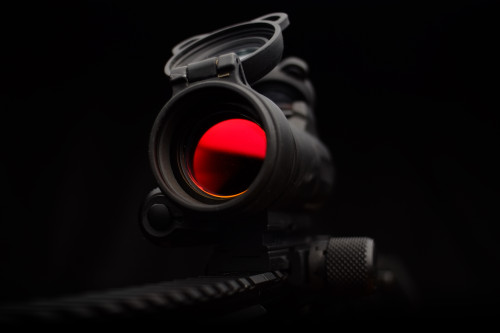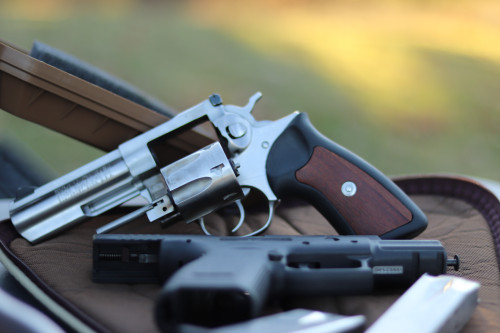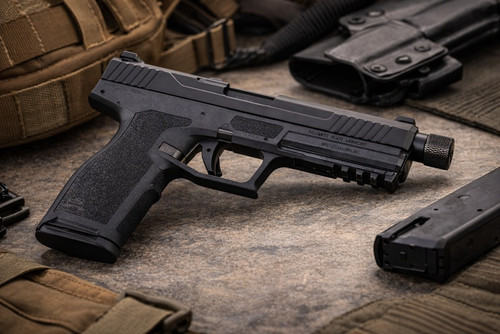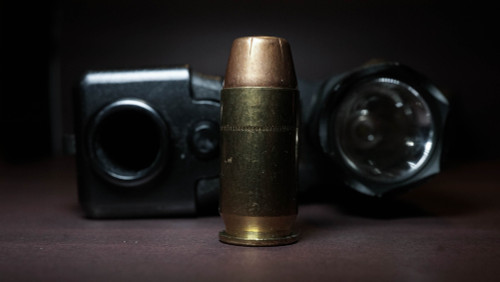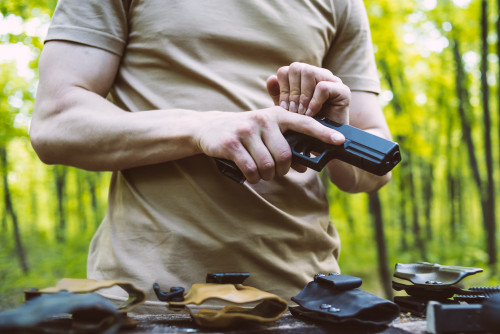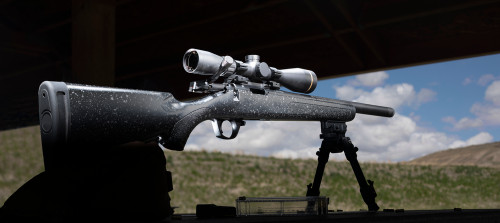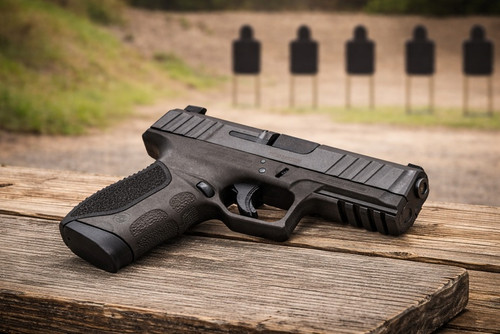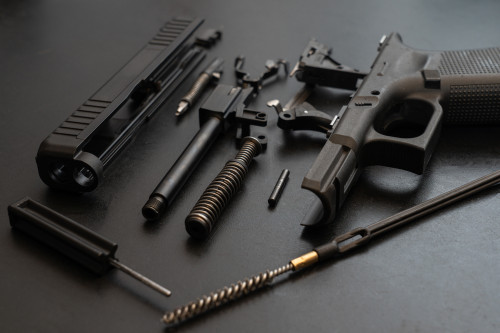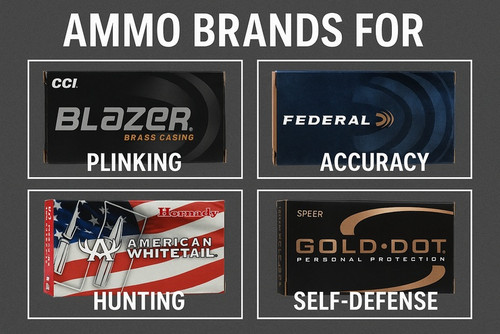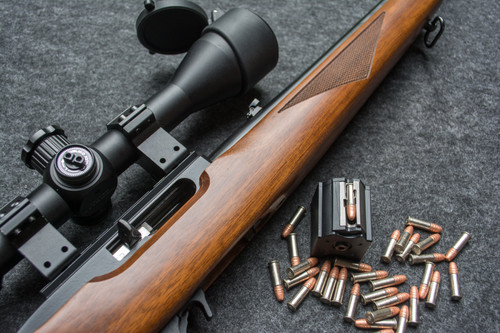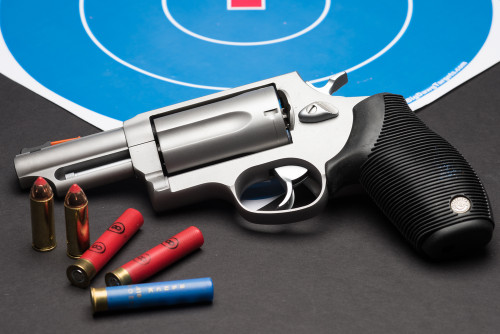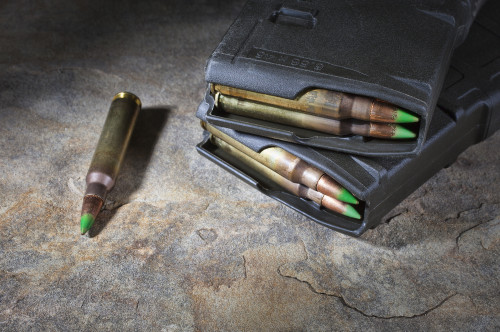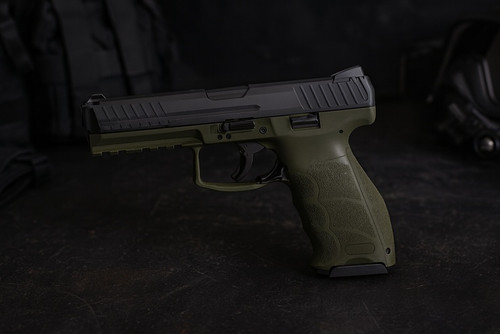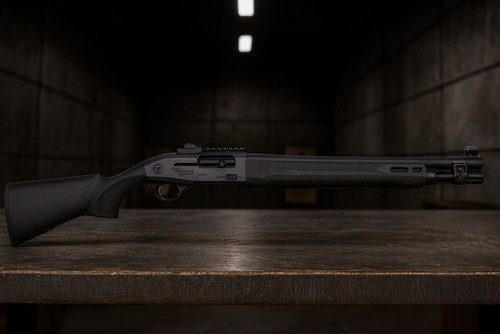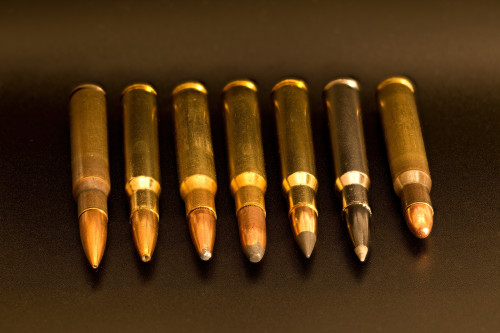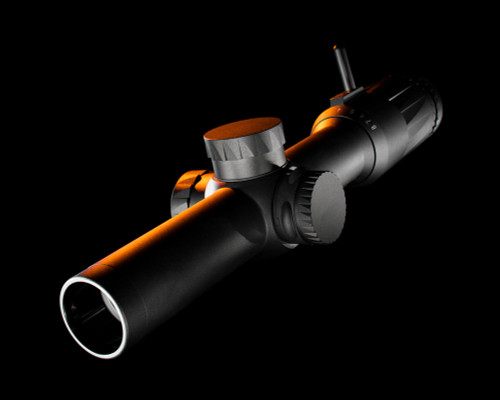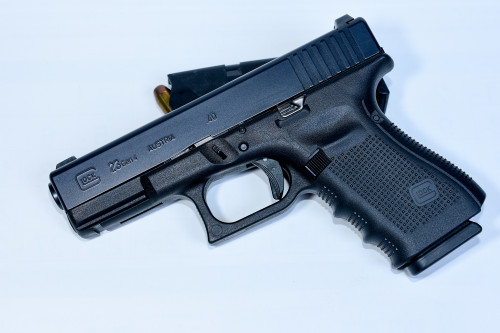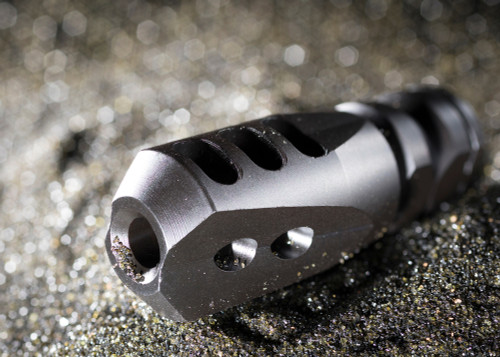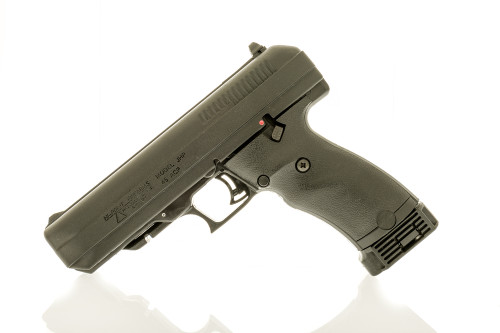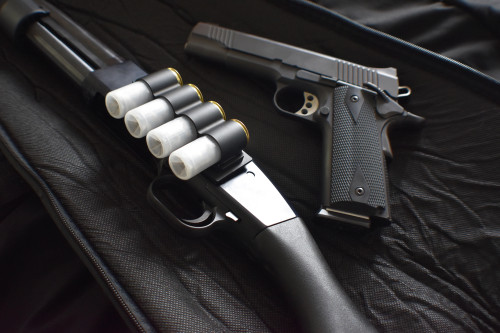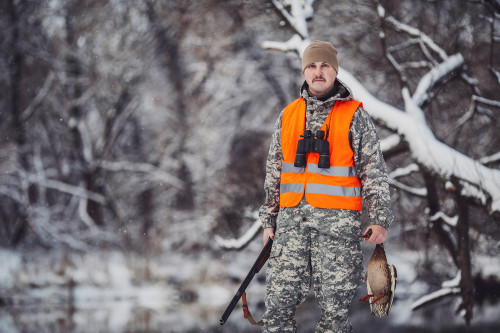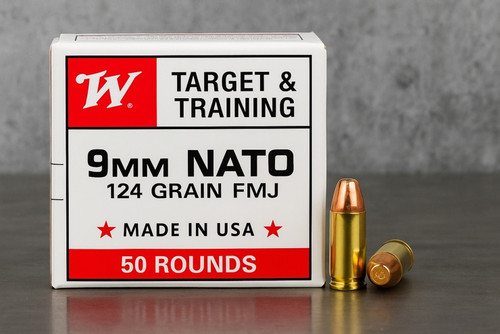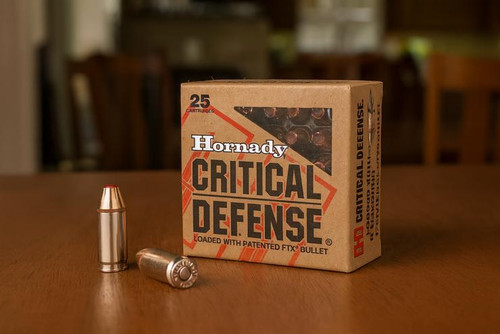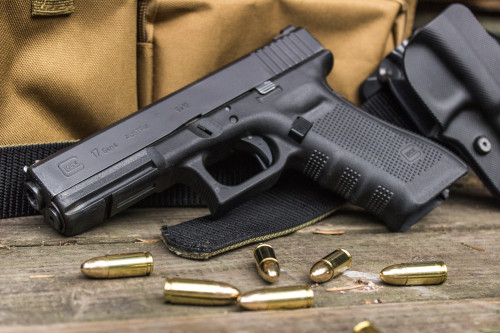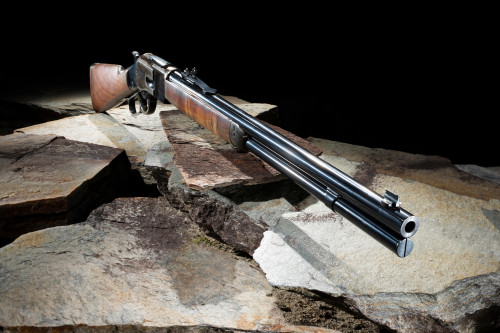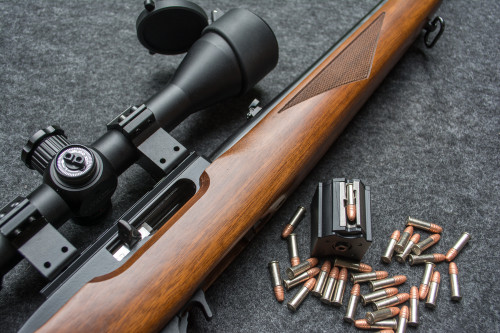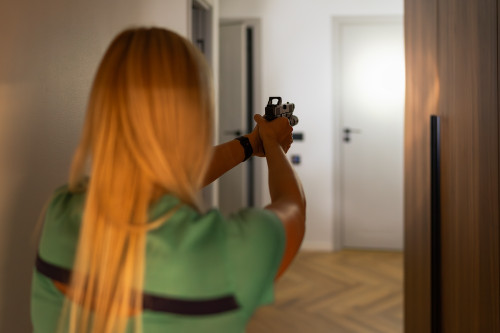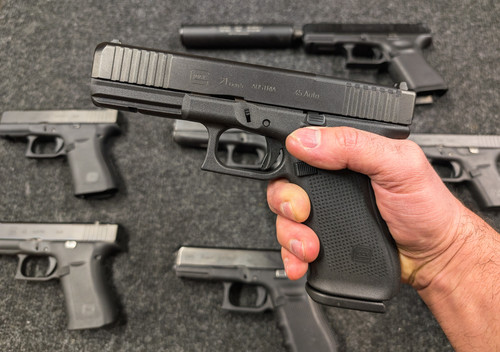There was a time when red dots were the cool new thing in the gun world. But now, red dots have gone full mainstream — they’re just as necessary for your firearm’s setup as a tactical light or an extended magazine.
Whether you’re a total newbie or a seasoned shooter, a red dot should be part of your kit. Compared to traditional iron sights, red dots are better across the board. Whether you need improved accuracy, faster target acquisition, or simply improved ease of use, a red dot delivers.
As they’ve spread through the gun world, red dots changed from restrictively expensive gadgets to affordable accessories. Today, you can find decent red dots for $250 or less, an unthinkable price tag just a decade ago.
As a result, budget red dots are widely available today. But whenever you’re shopping for a budget item, you want to avoid buying a piece of crap. Fortunately, ProArmory is here to help you navigate the world of inexpensive red dots. Below, we’ll break down some of our top choices for the best budget red dot optics of 2024.
Overview of Red Dots
Before we get too into the weeds here, let’s get a big picture look at red dots, why they’re advantageous, and some other high-level concepts.
What Is a Red Dot Optic?
Put simply, a red dot is a gun optic that uses a colored LED to designate your point of aim. A company called Aimpoint built the first red dots in the 1970s. These were gigantic, expensive scopes that weren’t practical for anything outside of a military use. But as technology developed, red dots became more compact and cheaper to produce.
Today, red dots are some of the most common optics you’ll find among law enforcement, civilians, and the military. They’re light, compact, and durable enough for any application. Whether you’re looking for an optic for hunting, competition, or simple home defense, a red dot will perform admirably.
While they were originally strictly rifle optics, they’re now made for pistols, too. They can seriously simplify pistol shooting, and many modern pistols come from the factory able to accept some kind of red dot.
Benefits of Red Dots
Red dots are basically a replacement for iron sights. They allow a shooter to acquire a sight picture more quickly and shoot more accurately than with irons. Most shooters even agree that red dots offer a measurable improvement over iron sights.
The main advantage of red dots is their sight radius. When you’re shooting with irons, you need to align the front and rear sight so that the gun shoots straight. The distance between these two sights is called a “sight radius.”
Red dots effectively have an infinite sight radius by combining front and rear sights into a single point of aim. Once you have your red dot sighted in, all you need to do is point the gun, make sure the dot is over what you want to hit, and pull the trigger.
Additionally, all red dots have infinite eye relief. This term refers to the effective distance between the optic and the shooter’s eye. Most non-red dot optics have some kind of set eye relief, which limits where you can attach them to your gun. But that’s not a problem with red dots. You can mount them any distance from your eye, so they’re a great choice for AKs and other rifles that allow you to attach an optic to the handguard.
Some shooters prefer irons to red dots because while red dots can break, irons typically can’t. The vast majority of these people are playing devil’s advocate and have never run into a situation where their red dot actually broke.
Red Dot Magnifiers
Keep in mind that unlike other types of gun optics, red dots can’t provide any magnification. While they’ll help you aim, you’ll be stuck at 0x magnification. Some optic companies now sell red dot magnifiers. These are essentially optics without a reticle that you can place behind a red dot to magnify your sight picture. While they’re useful, bear in mind they do add weight to your gun.
Dot Optics and Astigmatism
Although they’re called “red dots,” these optics come in a variety of colors. While red is the most common, gold and green dots also exist. Some people who suffer from astigmatism (an eye condition that causes lights to appear blurry) may find these colors more compatible with their vision than red dots — and they function the same anyway.
Types of Red Dots
Nex up, let’s look at some of the optics in the same family as red dots.
Reflex Sights
Red dots fall under the optics category of reflex sights (sometimes called reflector sights). The category covers any kind of gun optic that involves projecting a reticle over a lens. These were first developed for fighter aircraft in the Second World War, but technological advances have allowed them to attach to smaller and smaller firearms. Today, there are even reflex sights for pistols.
Holographic Sights
There aren’t a ton of models of holographic sights out there today. But the ones that do exist get a lot of use in military and law enforcement settings.
Like a red dot, holographic sights project a reticle over a pane of glass to give you a point of aim. Unlike red dots, holographic sights are parallax-free. This means that no matter how your eye moves, the reticle will stay in the same place. Holographic sights also tend to have larger windows than red dots.
Holographic sights are also heavier and generally much more expensive than red dots, which takes them out of the “budget optic” category. The EoTech XPS and EXPS models are some of the most recognizable examples of holographic sights. In fact, EoTech was the only company to make holographic sights at all until 2017, when Vortex got into the game.
Prism Sights
Although prism sights aren’t technically red dots, they often perform the same function. However, they go about doing those duties differently.
While red dots and holographic sights project a reticle onto an optic’s viewing lens, prism sights have their reticles physically etched into the lens. This gives prism sights a few big advantages over holographic and reflex sights.
First and foremost, prism sights can have built-in magnification, usually either 3x or 5x. During the daylight, you can run them without any batteries. Many prism sights also feature illumination, which lights the reticle up using an LED similar to a red dot.
Prism sights aren’t perfect, though. Their main drawback is that they’re generally heavier than reflex or holographic sights. Remember that ounces equal pounds!
Top Budget Red Dot Sight Brands
Some well-known companies like Aimpoint and Trijicon have a reputation for making great gear with a high price tag. Others (like the ones we’ll go over here) are known for making more budget-friendly red dot options.
One of the main issues you may face when shopping for budget optics is their country of origin. Most of the companies we’re about to cover manufacture their optics in China — to keep costs down. If you prefer to buy American products, you’ll be mostly out of luck when shopping for budget optics. That’s a luxury for rich people.
Holosun
If you were to look up “budget red dot” in the dictionary, you’d find a picture of a Holosun. Headquartered in California, the company first opened its doors in 2013. That makes it one of the new kids on the block along with their rivals Primary Arms (we’ll cover them later).
Holosun’s optics are famous for being extremely reliable and durable at their price point. While they’re known primarily for their holographic optics, they have also made a name for themselves in the traditional tube red dot market.
Finally, Holosun has a decent warranty policy. If anything on your Holosun optic breaks from a manufacturer defect, you can get it fixed or replaced for free.
Vortex
Hailing from Wisconsin, Vortex isn’t exactly a “budget optic company.” You can get plenty of high-end Vortex glass, particularly their Razor series. But they do also make some gear with a less intimidating price tag.
Their warranty sets Vortex apart from the vast majority of gun optic companies. You can do anything to a Vortex optic (run it over with your truck if you want) and send it in for replacement. When you buy a Vortex optic, you’re buying it for life. The warranty is fully transferable, too, so it applies even to secondhand optics.
Primary Arms
Like Holosun, Primary Arms is another relative newcomer in the world of optics. Founded in Texas in 2007, Primary Arms is currently pivoting to produce higher-end models (notably their GLx line), but they are still best known for making a decent dot at a reasonable price.
Primary Arms’ warranty is pretty good, although not at the same level as Vortex’s. If any of the optic’s mechanical or internal parts fail, Primary Arms will repair or replace it at no cost to you.
Bushnell
Bushnell has a longer history than many companies on this list. It began in 1948 when founder David P Bushnell brought a crate of binoculars to California from his honeymoon in Japan. He sold the binoculars over the mail, and launched a business bringing affordable optics to middle-class Americans.
Today, Bushnell is a wholly owned subsidiary of gun industry titan Vista Outdoor. Vista owns a ton of brands, including the well-known Remington. Bushnell is Vista’s budget optic arm and the only optic company on this list to buck the “made in China” trend. Instead of producing its red dots in China, Bushnell’s factories are located in South Korea. It still manages to keep its optics competitively priced, though.
Sig Sauer
You probably don’t think of Sig Sauer as an “optic” brand. The company is much more famous for its firearms, like the military’s M17 and M18 service pistols and the new Sig MCX Spear rifle.
Sig does make its own optics, though! It’s developing into the world’s most modern full-service small arms manufacturer. You can build an entire weapon platform with just Sig components, including optics. While they build their firearms in Newington, New Hampshire, their optics come from China.
Sig offers the same boilerplate warranty as the rest of the rest of the companies on this list (except Vortex).
What To Consider When Choosing a Budget Red Dot Sight
Before we look at specific red dot models, let’s cover some things to keep in mind while you’re shopping for optics.
Battery Life
While battery life is definitely something to consider when shopping for a red dot, it’s also fairly standard across the board. Most red dot optics will run on medium intensity for about 50,000 hours on one battery. That’s enough for years of use.
If you’re really worried about battery life, buy a 12-pack of CR 2023 batteries. This package will probably power a single red dot for longer than you’ll be alive. Keep one battery in your optic and another stashed in your kit. The inside of a pistol grip or buttstock are both good options.
Brightness Settings
This feature seems to surprise the most newbies. You don’t just turn a red dot “on” and “off.” If you want to use your optic in multiple light conditions, you need to be able to adjust the brightness of the dot.
Reticle Options
For the most part, you’ll have few reticle options with red dots. Most common red dots only feature a dot at the point of aim. Others have a dot with a circle around it to help speed up target acquisition. Some red dots feature an actual reticle, but they’re few and far between.
Keep in mind when you’re assessing a red dot optic the size of the dot itself. Generally, companies will make two of the same red dot model: one with a big dot and one with a small dot. These are usually 2 MOA and 6 MOA respectively, although this varies depending on the manufacturer.
As a rule of thumb, bigger dots are better for shooting quickly at close range while small dots are better for shooting accurately at long range.
A big dot catches your eye more easily, and it’s easier to line it up with a target to pull the trigger. However, a big dot can also obscure part of a target from your vision. This can make it difficult to actually see a target, especially if it’s small, far away, or both. In this situation, a smaller dot is better. While it will take your eye more time to locate the dot, you’ll see more of what’s actually downrange.
Choosing the right dot size boils down to how you’re going to use the gun. If you’re setting up a self-defense weapon, then every second counts. This makes a bigger dot the better choice since you can quickly acquire a target. If you’re building your gun out for target shooting, a smaller dot is advantageous since you’ll need to nail smaller targets that are farther away.
Durability
Durability is pretty standard across the board for budget red dots. They generally come in a housing made of aircraft-grade aluminum. This can stand up to drops, bumps, scratches, and most other non-catastrophic impacts.
A bigger problem for many budget red dots is water- and fog-proofing. If moisture gets into the housing of your red dot, it’ll; turn it into a fancy paperweight. Look for fog-proof red dots and those with a water resistance rating.
Footprint Compatibility
You can’t just use a hefty glob of Elmer’s to attach a red dot to your gun. Instead, you’ll need a device called a mount to bridge the gap between gun and optic. Unfortunately, mounts aren’t universal.
Don’t despair, though. Most modern red dot manufacturers engineer their optics with the same common footprint, which is the outline that the bottom of the optic makes that allows it to interface with a mount. Most optics feature an Aimpoint T2 footprint, so footprint compatibility is fairly common between most red dots.
Warranty
We covered red dot warranties earlier in this post. Basically, if you get a Vortex, it’s like buying an L.L. Bean jacket — you get it for life, no matter what happens to it. Other companies only replace their products because of manufacturing defects.
User Experience
Outside of the features we mentioned above, certain red dots have some quality of life upgrades. Budget red dots will sometimes ax these features to cut down on costs, but they’re definitely good to be aware of.
- Shake Awake: Here, a sensor in the optic will automatically turn on when it senses movement. This saves you from manually turning your red dot on before shooting. If you’re using your gun for self-defense, definitely keep an eye out for this feature.
- Auto Shutoff: This feature is handy, although less critical than shake awake. Here, the gun’s reticle will turn off after a certain amount of time. Usually, if an optic has shake awake technology, it also has auto shutoff. If your optic doesn’t sense that it’s moving, it’ll automatically turn off. This way, it won’t turn off in the middle of a firefight.
- Solar Powered: Although most red dots can run for years without needing a new battery, they’re still susceptible to equipment failure. Fortunately, many red dot makers followed the example calculator manufacturers set in the 1980s (some of us were actually there) and added solar panels to their optics. Solar powered red dots will power themselves first with ambient light, then begin drawing on their battery power reserves. Between the two sources, you have an optic that will functionally run forever.
ProArmory’s Best Budget Red Dot Sights for 2024
Now that you know what to look for in a red dot, let’s look at some specific models. Here are our choices for the best budget red dots of 2024.
Holosun HS403B
Holosun is synonymous with powerful budget optics, including the HS403B. Once you take a close look at this optic, you’ll understand how it punches way above its weight class.
The HS403B is packed with a ton of features you don’t usually find in a budget optic. For one, it’s powered by a CR2032 battery. With this single battery, it can run for almost 50,000 hours on medium intensity. It also has 10 different brightness settings and is night vision compatible.
That’s not all, though. The HS403B also features shake-awake and auto-shutoff technologies, so it’s always ready to go — no fumbling with knobs to get your red dot ready to shoot.
All these extra features are definitely cool. But ultimately, the most important aspect of an optic is image clarity, right? Fortunately, the HS403B has that. While it’s definitely not the best glass out there (images can sometimes look distorted around its edges), it’s absolutely good enough to use effectively. Holosun optics have even been used in the Russo-Ukrainian War, so they’re officially combat-tested.
However, the HS403B falls short in its reticle. You can only get it with a single dot at the point of aim. That’s definitely not a dealbreaker, but something to keep in mind. If you’re looking for a more advanced reticle at a similar price point, check out the Primary Arms MD-25 (covered later in this list).
But undoubtedly the best part about the HS403C is its price. This optic usually goes for just under $175, but you can often find it on sale.
The Holosun HS407K-X2
Many of the red dots on this list are primarily designed for rifles. But over the last decade, red dot technology has taken off in unexpected directions — including into the world of pistols. If you’re looking for an affordable red dot for your pistol, Holosun still takes the cake with the HS407K-X2.
The HS407K-X2 has everything that makes the HS403B (mentioned earlier) so great. It features shake awake and auto-shutoff technology, which is perfect for a “bump in the night” pistol. It also has 10 brightness settings and is night vision compatible. The HS407K-X2 boasts a 50,000-hour battery life on medium intensity, too.
The HS403B and the HS407K-X2 have similar reticles. However, while the HS403B has a single 2 MOA dot, the HS407K-X2 has a 6 MOA dot. This makes it a great choice for anyone planning on shooting close targets and need to do it quickly.
That’s where the similarities end, though. In fact, the HS407K-X2 may actually outclass its rifle-based cousin. The “X2'' tag at the end of its name alludes to that. Holosun’s X2 series has improved glass clarity over other Holosun models. Additionally, X2 optics allow a user to lock in their settings, ensuring they don’t mess up their preferences by accidentally bumping a button.
Vortex SPARC II
Vortex isn’t exactly a “budget optic” company, but it offers some budget models, including the SPARC II. This dot is tough, durable enough to withstand anything you throw its way.
Its user interface sets the SPARC II apart from a lot of the other optics we list here. Instead of having to turn a rotary knob to select your brightness, just turn the optic on. It’ll automatically power up at the last brightness setting you used. However, if you do need to adjust it, the SPARC II has ten different brightness settings plus two different settings for night vision compatibility.
Paradoxically, the SPARC II doesn’t have shake awake, but it does have auto-shutoff. The SPARC II also doesn’t offer solar charging capabilities, which makes its short battery life more impactful (more on that later).
While you can get better glass clarity from other Vortex models, the glass clarity of the SPARC II is better than most optics on this budget list. You won’t have any trouble acquiring a clear sight picture with this dot.
That’s not to say the SPARC II is without its shortcomings. At $250 MSRP, these are definitely more expensive than the Holosuns and Primary Arms of the gun world. The SPARC II’s battery life also leaves something to be desired, running only 6,000 hours on medium power.
Bushnell Trophy TRS-25
Sometimes all you want is a simple and effective red dot. No need for advanced features — you just want to point and shoot. If that sounds like your kind of thing, the Bushnell Trophy TRS-25 may be the best red dot sight for you.
One unique aspect of the Bushnell TRS-25 is its dot size. While the standard size for a small red dot is 2 MOA, the TRS-25 has a 3 MOA dot. This makes it easier for your eye to pick up the dot and acquire targets more quickly. It also has 11 brightness settings, so it adjusts seamlessly to ambient light conditions.
But the most insane thing about the TRS-25 is its price. You can easily find a TRS-25 for around $120, making it the most competitively priced dot on this list, and one of the cheapest decent dots available now.
With that said, the TRS-25 definitely cuts some corners to hit that price. For example, it doesn't have any shake awake or auto-shutoff features. It doesn’t have solar charging capabilities, and it can only run for about 5,000 hours on a single battery. It’s also the only optic on this list without night vision compatibility.
All in all, the TRS-25 isn’t a bad little red dot. It’s just a stripped down optic that allows anyone to get into the red dot game for less than the cost of an expensive dinner.
Primary Arms SLx MD-25
We mentioned earlier that Primary Arms is the king of budget optics. The MD-25 is its take on a classic tube-style red dot, and you can get it for less than the price of a case of 9mm. We’re honestly not sure how it does it. The MD-25 is part of Primary Arm’s SLx line, its lowest priced optics, and while MSRP sits just under $190, you can often find them for less than $100.
Primary Arms makes the MD-25 with two different reticles: ACSS and simple dot. Unfortunately, you can’t switch between the two in the same unit. If you buy an ACSS MD-25, you cannot use just a dot (and vice-versa). The ACSS version usually costs a little more than the dot.
There’s plenty to love about the MD-25. It’s compact and durable enough to get the job done on any rifle. It has 12 different brightness settings, to ensure you can acquire targets in both bright-light and midnight-dark environments. It’s even night vision compatible!
It also has great battery life. The MD-25 is powered by a single CR2032 battery that can illuminate its reticle for between 12,500 and 50,000 hours.
Like some of the other entries here, the MD-25 uses the same footprint as the Aimpoint T2, so you can mount it on more than just an AR. It makes a great addition to any AK platform!
So we’ve covered all the things that make the MD-25 great. Now, let’s look at where it falls short. For starters, the knobs don’t always click perfectly, so you may lose track of brightness levels when you adjust it. Plus, this optic is kind of a barebones option — it doesn’t have shake awake, auto shutoff, or solar-charging capabilities.
That said, if you’re looking to get into the red dot game without breaking the bank, the MD-25 is a great choice. We highly recommend it.
Sig Sauer Romeo5
The Sig Romeo5 has been the king of budget red dots for nearly 5 years now — and for good reason. There’s plenty to love about the Romeo5. It’s one of the only entries on this list to feature shake awake and auto shutoff technologies. It also comes with a Spectracoat lens coating, which allows you to see the 2 MOA dot on lower brightness settings. So you can push this optic’s battery life to the limit.
The Romeo5 also has 8 total daytime brightness settings, giving you a variety of different illumination options, plus two night vision settings. Finally, the Romeo5 has the same footprint as the Aimpoint T2, so you can use it with any mount designed for the T2 (which is a lot of them). This feature alone gives you a ton of flexibility, allowing you to mount this optic on a variety of guns.
Of course, the Romeo5 isn’t perfect. Its biggest shortcoming is that it’s not solar powered. It doesn’t have the best battery life, either — it can only survive for 40,000 hours on a single battery at medium intensity. That’s less than both the Primary Arms MD-25 and the Holosun HS403C (for those of you keeping score).
The glass quality is fine, but if you look through the glass of this optic you will notice a slightly blue tint. That’s not such a big deal, but it is something to be aware of.
All in all, we really love the Sig Romeo5 and feel confident recommending it to old and new shooters alike. Put one of these on your Daniel Defense DDM4 — you know budget isn’t an issue for them!
Final Thoughts
When shopping for budget red dots, there’s no “best” option. Instead, you need to assess the features that are most important to you and find the red dot that provides them. Don’t need solar charging or shake awake? Great, you can grab an optic without those features and save money. Ultimately, any of the optics we’ve listed here will make a great companion to an AR, AK, or any other close-range fighting rifle.
Looking for a best-in-class budget red dot optic? At Pro Armory, we offer great tactical gear at a price you can afford. Check out our selection of optics to find your perfect match.



